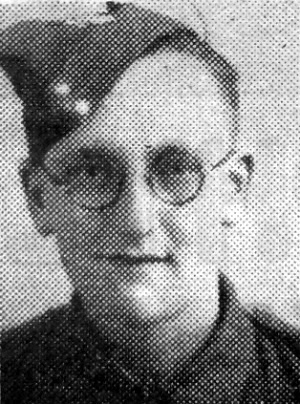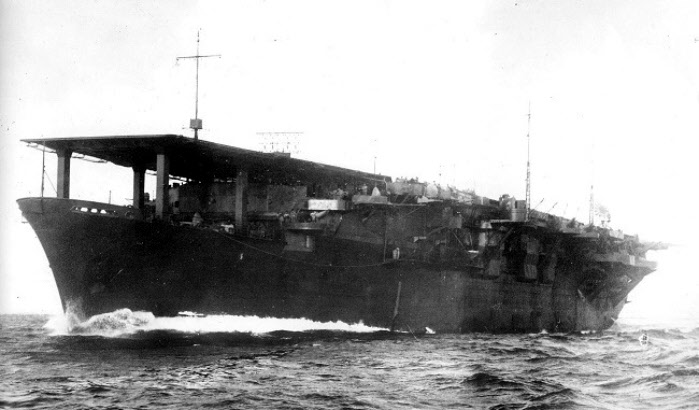
Arthur Jackson was born in the Dewsbury area in the summer of 1921, the eldest child of four children born to Arthur Spurr Jackson and his wife, Sarah Jane Warden, who married at Christ Church, Staincliffe, Dewsbury on the 17th July 1920. At the time of their marriage, Arthur Spurr Jackson was a 23 year-old foreman ragger of Woodkirk and Sarah Jane a 21 year-old spinster of Occupation Lane, Staincliffe, Dewsbury.
By September 1939, Arthur Spurr Jackson, a piecener in a woollen mill, was living with his wife, Sarah Jane, and three of their children, probably including Arthur junior, at 33, Swithenbank Avenue, Ossett.
The “Ossett Observer” had this obituary for Private Arthur Jackson:1
“Ossett Soldier Presumed Killed – During Evacuation Of Singapore – Mr. and Mrs. Arthur Jackson, 33, Swithenbank Avenue, Ossett, received intimation from the War Office on Saturday that their son, Private Arthur Jackson, who was reported missing in Malaya in February, 1942, was now officially recorded as presumed killed in action, on or shortly after February 16th 1942.
An earlier letter from the War Office dated January 17th, stated that Private Jackson had been specially selected for evacuation from Singapore, and the ship he was on ran aground on an island a few miles from that port. It was not known whether he embarked from there, but, as nothing had been heard from him since, the Department reluctantly, and with regret, reached the conclusion that he must have lost his life either on one of the many ships and small craft which were sunk during the evacuation, or in the fighting on land.
Private Jackson attended both Gawthorpe and Southdale Council Schools as a boy, and, after working for a time a Messrs. Jubb’s, Dewsbury, he became a conductor on the Yorkshire bus services. He was a trombonist with the Gawthorpe Salvation Army and Ossett Borough bands. His brother, Maurice Jackson, who has served with the K.O.Y.L.I. in Germany for nearly three years, is also a trombonist in the Borough band. There is also a younger brother and sister.”
Numerous British and Australian soldiers taken prisoner remained in Singapore’s Changi Prison. Many died in captivity. Thousands of others were shipped out on prisoner transports known as “hell ships” to other parts of Asia, including Japan, to be used as forced labour on projects such as the Siam–Burma Death Railway and Sandakan airfield in North Borneo. Many of those aboard the ships perished.
Private Arthur Jackson died on or around the 16th February 1942, aged 20 years, when the Japanese broke through the Singapore defences. He is remembered on Column 102 of the Singapore Memorial. The Memorial stands in Kranji War Cemetery. Kranji War Cemetery is 22 kilometres north of the city of Singapore, on the north side of Singapore Island overlooking the Straits of Johore.
Before 1939, the Kranji area was a military camp and at the time of the Japanese invasion of Malaya, it was the site of a large ammunition magazine. On the 8th February 1942, the Japanese crossed the Johore Straits in strength, landing at the mouth of the Kranji River within two miles of the place where the war cemetery now stands. On the evening of the 9th February, they launched an attack between the river and the causeway. During the next few days fierce fighting ensued, in many cases hand to hand, until their greatly superior numbers and air strength necessitated a withdrawal.
After the fall of the island, the Japanese established a prisoner of war camp at Kranji and eventually a hospital was organised nearby at Woodlands. After the reoccupation of Singapore, Kranji War Cemetery was developed from a small cemetery started by the prisoners at Kranji, by the Army Graves Service.
Within Kranji War Cemetery stands the Singapore Memorial, bearing the names of over 24,000 casualties of the Commonwealth land and air forces who have no known grave. Many of these have no known date of death and are accorded within our records the date or period from when they were known to be missing or captured. The land forces commemorated by the memorial died during the campaigns in Malaya and Indonesia or in subsequent captivity, many of them during the construction of the Burma-Thailand railway, or at sea while being transported into imprisonment elsewhere. The memorial also commemorates airmen who died during operations over the whole of southern and eastern Asia and the surrounding seas and oceans.2

Above: A Japanese “Hell Ship.” The concept of hell ships is a horrifying legacy, one of the worst reminders of the Oriental involvement in the Second World War. Although originally a Nazi terminology, the concept of hell vessels became more infamous after the Japanese started utilising the marine route to transport the prisoners of war. Inhuman conditions with complete disregard for the health, sanitation and sanity of the prisoners led to these ships being anointed with such a title. Many such hell ships were destroyed by Allied Powers’ air and submarine attacks, leaving many POWs dead – either on the ship itself or by unintentional raids.
References:
1. “Ossett Observer”, Saturday 9th February 1946.